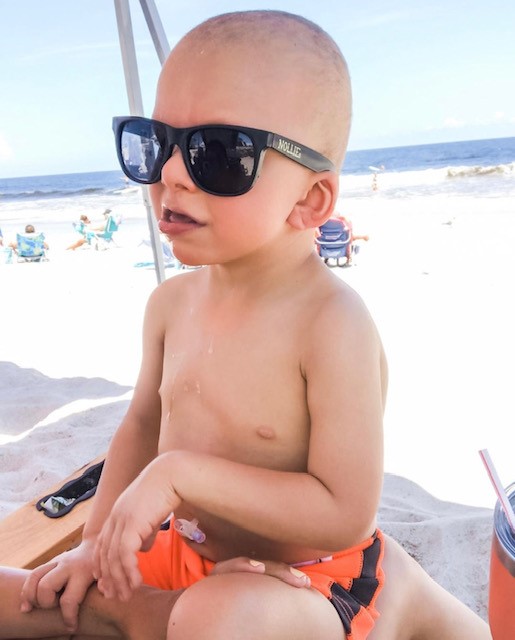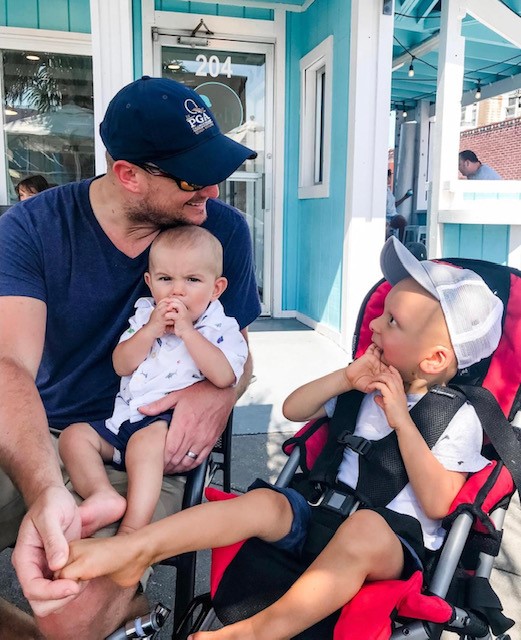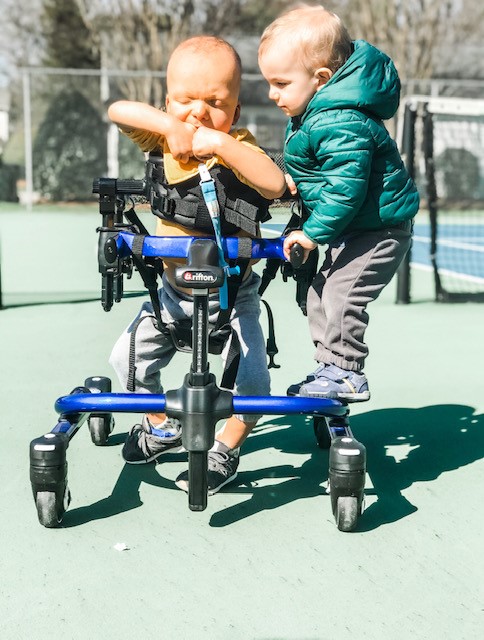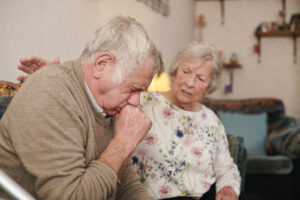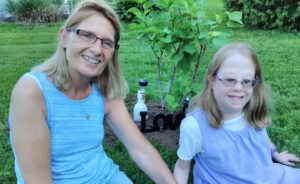February is American Heart Month, and we are raising awareness of children living with congenital heart disease.
From the time they are born, kids with serious heart conditions go through a lot – tests, screenings, surgeries, medications, therapy and more. In this article, learn about congenital heart disease, understand how to find support and read one family’s story of how they’ve coped.
What is a congenital heart defect?
The word congenital means “from birth.” Congenital heart defects are heart conditions that are present at birth and relate to how the heart is formed during fetal development. Congenital heart disease refers to living with the effects of being born with heart anomalies.
There is no cure for congenital heart disease, but detection and treatment continue to improve with time as doctors and scientists learn more through research and innovative treatments. This means that more and more children with congenital heart disease are living went into adulthood.
Facts and statistics about congenital heart disease
- About 1 in 120 babies is born with a congenital heart defect.
- Congenital heart disease is the most common birth defect.
- Congenital heart disease is 50 times more prevalent than childhood cancer.
- While there is no cure, more than 85 percent of children with congenital heart disease live well past the age of 18.
- According to Conquering CHD, in 2013, costs for hospitalizations due to congenital heart disease totaled more than $6 billion.
- About 15 percent of congenital heart defects are associated with genetic conditions.
Types of congenital heart defects
Congenital heart defects are grouped into two categories: critical and non-critical. About one in four congenital heart defects are considered critical. Most babies with critical congenital heart defects need surgeries and other interventions within the first year of life.
According to the Centers for Disease Control and Prevention, here are the most common non-critical congenital heart defects:
- Atrial Septal Defect
- Atrioventricular Septal Defect
- Ventricular Septal Defect
Here are the most common critical congenital heart defects:
- Coarctation of the Aorta
- Double-outlet Right Ventricle
- Transposition of the Great Arteries
- Ebstein Anomaly
- Hypoplastic Left Heart Syndrome
- Interrupted Aortic Arch
- Pulmonary Atresia
- Single Ventricle
- Tetralogy of Fallot
- Total Anomalous Pulmonary Venous Return
- Tricuspid Atresia
- Truncus Arteriosus
Nolan’s story
Julie Berry and her husband, Brian, were over the moon when they found out they were going to have a baby. All of that changed when they went for Julie’s 18-week anatomy screening.
During the visit, they learned they were having a boy, and that he had brain abnormalities and a hole in his heart. The news was devastating for the Berrys. They visited various specialists, but no one could provide answers.
Regardless, when Nolan was born, his parents saw him as perfect. After delivery, Nolan received care in the hospital’s neonatal intensive care unit. A doctor pointed out that Nolan’s eyes were spaced further apart than most other babies and other physical differences. He didn’t have eyebrows or eyelashes. When the doctor suggested genetic testing, Julie was overcome with emotions of sadness, fear, and pain. “At that point, I lost it,” remembers Julie.
When the genetic test results came back, Nolan was found to have Cardiofaciocutaneous Syndrome or CFC syndrome. “On one hand, it was nice to finally have a diagnosis,” says Julie. “But on the other hand, it was terrifying.”
What is cardiofaciocutaneous syndrome?
Cardiofaciocutaneous syndrome or CFC syndrome is a rare disease that affects about 1 in 800,000 people, possibly more. There is no cure for CFC syndrome. It is usually caused by a mutation in the BRAF gene, but can also be caused by other genes. It is not typically inherited from parents or other family members.
Children are usually not diagnosed with CFC syndrome until early childhood when a doctor notices unique clinical features in a child. According to RASopathiesNet, it is possible to diagnose CFC syndrome during prenatal testing if the gene is known and the condition is suspected.
CFC syndrome generally affects an individual’s heart (cardio), face (facio), and skin (cutaneous). CFC syndrome affects people differently, but the majority of individuals have symptoms that include:
- Abnormal heart valve formation
- Vision impairments
- Absence of eyebrows
- Atrial septal defect or a hole in the heart wall
- Brittle or fine hair
- Coarse facial features
- Dry or wrinkly skin
- Feeding difficulties as an infant
- Developmental delays
- Intellectual disability
- Weak muscle tone
- Short stature
“The most amazing little kid”
Now almost 5 years old, Nolan requires a lot of medical care. “Kids with CFC don’t live to be in their seventies,” says Julie. Despite this, Nolan is a ray of sunshine in his family’s life. “He is just the most amazing little kid. I call him my professional cuddler.” Nolan teaches his family strength, courage, and perseverance.
Julie serves as Nolan’s primary caregiver, which includes monitoring his heart, oxygen levels, and daily seizures, which he has experienced since infancy. “After the seizure ends, he is happy,” says Julie.
Help at home for children with serious medical conditions
Prior to the pandemic, Nolan had started preschool and was going to various therapy appointments. Now, Julie works virtually with occupational therapists, physical therapists, and speech language pathologists to provide therapy for Nolan. He isn’t able to do virtual learning because of a visual impairment associated with CFC syndrome that makes everything look like a kaleidoscope.
Because of his medical condition, Nolan is not very mobile and needs constant interaction. It is a lot for one person to manage. Julie, who also has a toddler at home, says that having a personal caregiver or certified nursing assistant (CNA) in their home has been very helpful for them. At first, she was hesitant to have someone new in their home because she is protective of Nolan, but it has been a positive experience.
How a CNA helps
While in the home, the CNA helps Nolan with his therapies, plays, and interacts with him in other ways. “It’s nice to have extra hands so that I can tend to my little one, do the dishes, things like that, where I don’t feel so guilty leaving Nolan,” says Julie.
With a CNA’s support, Nolan works on crawling motions, walking, and hand strengthening exercises. He has a stander and a gait trainer, and a CNA helps motivate Nolan with a toy or music to encourage walking.
The Berrys partner with Maxim Healthcare Services for their in-home care needs. Nolan’s dad Brian works at Maxim as a field support manager, so it made sense for Maxim to provide them with home care. “I like how Maxim takes care of finding caregivers for me,” says Julie.
When she doesn’t have a CNA in her home, Julie says it sets them back. Things around the house don’t get done because she is spending more time with Nolan. “I’m his teacher, his therapist, his mother, everything,” she says. “The whole mom guilt thing is natural, but you tend to feel like you’re either neglecting other things or you’re neglecting your child.” With a CNA helping at home, Julie felt confident that Nolan was getting the attention he needed.
Finding support
The Community Alternatives Program for Children (CAP/C) is a Medicaid program that helps families of children with disabilities navigate resources and figure things out. The Berrys have a case manager through CAP/C who makes sure they have everything they need in terms of obtaining services and working with insurance.
Another valuable resource is CFC International, which has a Facebook group that allows families to connect and share information with each other. In response to COVID-19, CFC International arranged to have their medical advisory board talk with parents about the vaccine, which Julie says was really nice because she had a lot of questions since Nolan is more at risk.
The Berrys are also involved with the Rare Disease Network, which has a local chapter in Charlotte, North Carolina, where they live. “I try to find anything I can to get involved and bring awareness to CFC syndrome, since it’s rare and there isn’t a cure,” says Julie.
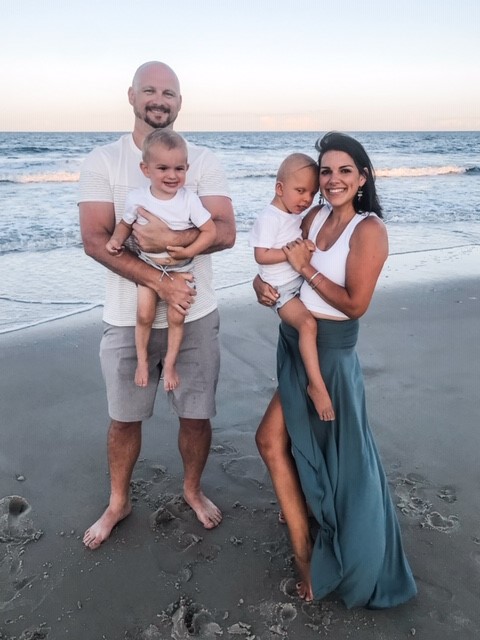
- CFC International
- Understanding Cardio-Facio-Cutaneous Syndrome: A Guide for Parents, Providers, and Educators
- American Heart Association Support Network
- Mended Little Hearts
- Rare Diseases Clinical Research Network
- Community Alternatives Program for Children
Donate to support research and innovative treatments
- Children’s Heart Foundation
- CFC International
- National Organization for Rare Disorders
Learn more about home healthcare at Maxim Healthcare Services.
*Patient information and likeness featured with the consent of the patient/family*

